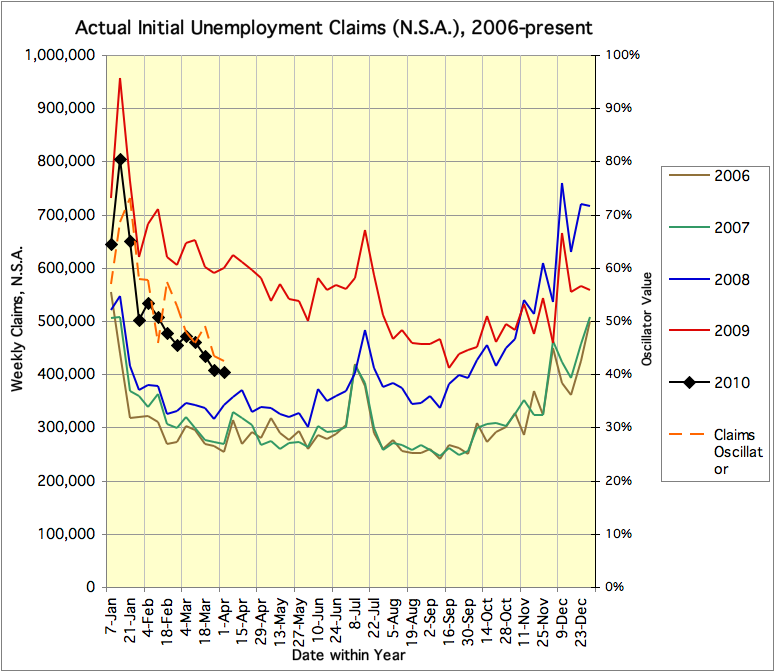On DeLong’s Blog, I got some replies to my comment (see previous post below, where I expanded on the comment). Robert Waldmann responded: “Brad didn’t assert that stocks are reasonably valued — he asserted that they are undervalued from the perspective of a long term investor. His claim is that stocks have always been undervalued from the perspective of a 35 year old saving for retirement.”
But even with a 30-50 year time horizon, one should not put money into an investment that is quite likely to stagnate for the first 10-20 years. The opportunity cost is too high. With regard to the stock market, one can write out a trio of trivial identities which, when combined, have some distressing import:
Stock Prices = (P/E) * Earnings.
Earnings = (Earnings/GDP) * GDP.
GDP = Population * (Employment/Population) * (Productivity/Employee).
From which:
Stock Prices = (P/E)*(Earnings/GDP)*(Population)*(Employment/Population)*(Productivity/Employee)
The value of this is that each of the components on the right-hand side is fairly well measured, allowing some insight into the broad trend for Stock Prices on the left hand side. Now, before we dive in to stock price trends, note that total return is of course related to both dividend yields and capital gains (growth in Stock Prices). But currently, dividend yields are historically very low, so any 30-something (or any other age) investor seeking a comfortable retirement needs capital gains. So we must consider the factors affecting prices:
1) P/Es have stayed on the high side since the dot-com bubble, and have not yet reverted to anywhere near their historical low points, despite the two market crashes in the last decade.
2) Earnings/GDP is still on the high side and has refused to revert to historical norms, despite a sharp nudge in the right direction in late 2008, thanks to government giveaway policies. (Some might even say we’re robbing the taxpayer to pay boardroom leeches…) But revert it will; go higher it cannot, if history is any guide.
3) Population growth is slowing and the rising anti-immigration sentiment will not help.
4) Employment/Population is on a downtrend and faces secular headwinds from aging demographics (and not just in the U.S., either). There is some room for near-term improvement from uptake of the unemployed (and the overseas military who are not necessarily contributing to domestic economic production), but the long-term scenario is not positive.
5) Productivity/Employee has been squeezed hard already during the recession and, absent another huge technological revolution which is not yet evident to investors, is unlikely to grow at anything more than the usual 2-3% for a while to come. (There is some room to grow hours/employee back to recent highs, though, and productivity here is a combination of hours worked and output per hour.)
So where exactly are we to find the factors that will even yield positive returns, much less 6% returns, within the next 10-20 years?
Footnote: The above statements are all backed with hard data, which I will endeavor to (re-)post in future notes here.

